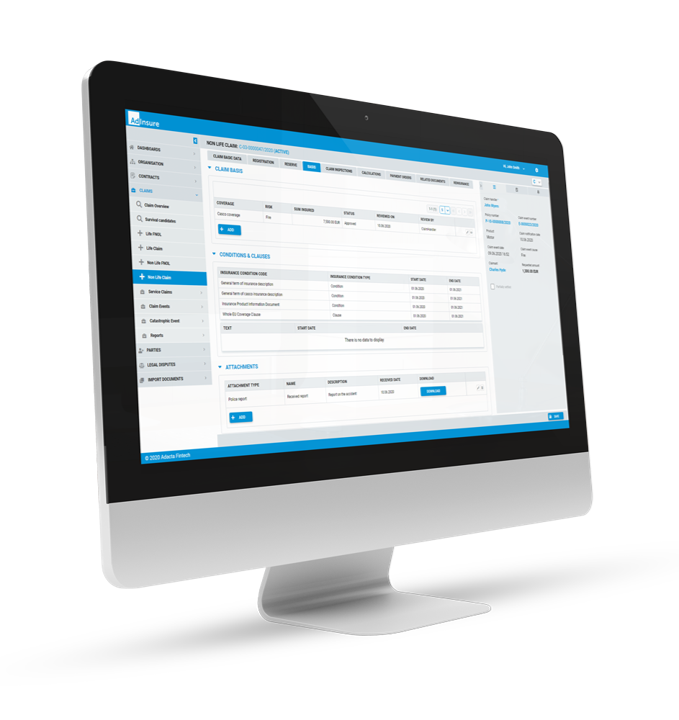Claims
The Claims functionality provides end-to-end support to insurers’ claims department needs, allowing claim teams to manage everything from claim registration and handling to liquidation. Insurers can opt for life or non-life claims module configuration or both.
Book a demo
Rich functionality and partner-friendly options
Claims handling is built on a flexible workflow, dashboard, and role design. The web-based architecture of the platform can be leveraged to simply extend the functionality to external service providers. Building specialized claims service platforms or integrating the Claims module functionality with front-end portals has never been this simple.
The Claims module is natively integrated with the Policy management module, its functionality extended by the Recoveries module, and it also provides services to the Reinsurance module. If you need to extend the claimant-related capabilities, you can use the Complaints Management and Legal Disputes modules.
Key features
First notification of loss
The advanced FNOL document is the entry point to collect and communicate the most important data related to a claim. With a configurable set of rules, this document streamlines further claim handling, while making sure it is assigned to the right team.
Claim registration
Claim registration is based on FNOL or directly entered related data, including policy, claimant, claim event, insured and damaged object, coverage, participants, document attachments.
Claim handling
Record and track data about claim events, collect and process the required documents, adjust reserves, handle claimant communication and decide on the claim basis.
Claim liquidation
Use a predefined business process that supports multiple levels of claims underwriting, post information to the Accounting module, and create payment orders automatically.
Survival claims settlement
Automatically register and settle claims based on a policy with a survival risk upon the expiration date of the policy.
Service claims
Pay out claims on behalf of a partner company and leverage support for both passive and active service claims (both sides of the partner agreement).
Catastrophic event management
Manage multiple claims linked to a single or multiple claim events with one or more claim causes (natural disaster).
Legal procedure management
Link a legal procedure to a claim or a recovery and enter legal procedure details as well as amounts sued for.
Policy integration
Full integration with the Policy Management module ensures that coverage and other required information is read directly from the policy during the claims management process.
Claims workflow and rules
Business users with proper permissions can easily adopt the workflow, forms and business rules, including claim assignment rules, reserves and claim calculation rules.
Claims desktop
User interface and workflow screens are designed and adapted to reflect the needs of individual claims teams.
Overviews and reports
Gain powerful insights with a comprehensive overview built with various parameters to display claims, claim events, survival candidates, complaint reports as well as many types of claims-related data (RBNS analytics, paid claims, principals, costs, etc.).



